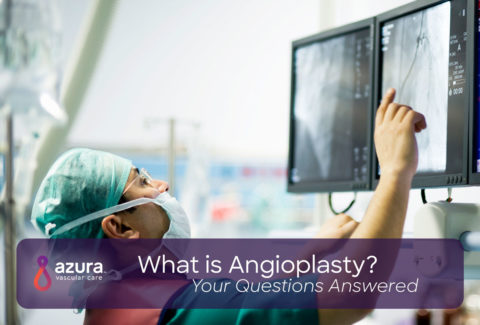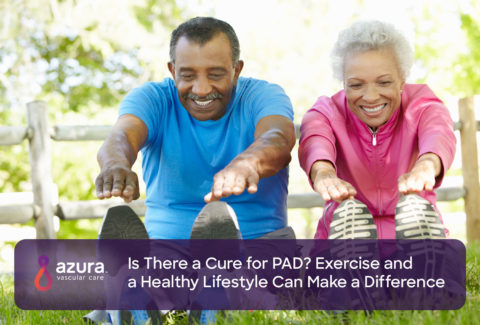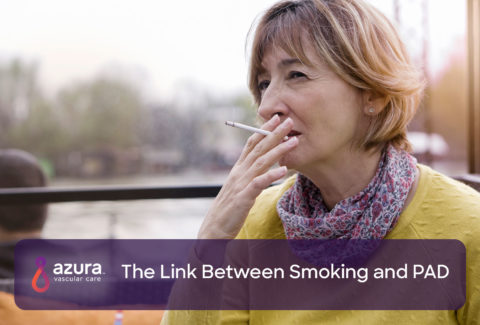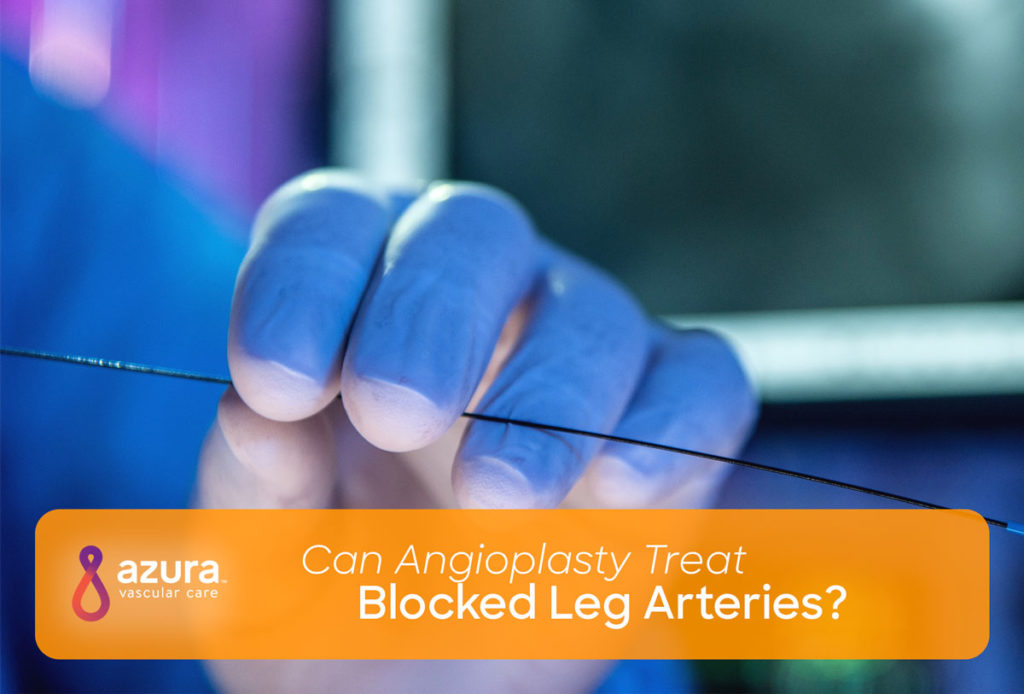
According to the Centers for Disease Control and Prevention, approximately 8.5 million people in the United States have peripheral artery disease (PAD). (i) Blocked leg arteries are a serious complication of PAD that can lead to non-healing sores and possibly amputation of the affected limb.
A minimally invasive endovascular procedure can treat these blocked leg arteries. Read more to learn about angioplasty of the leg.
What Is Angioplasty?
Angioplasty is a minimally invasive procedure performed under local anesthesia to help reopen or widen blocked or narrowed arteries and restore blood flow to your limb.
During the angioplasty procedure, a vascular specialist will insert a small balloon-tipped catheter into a groin-area blood vessel. Using X-ray guidance, the vascular specialist will advance the catheter into the blocked or narrowed segment of the artery. Once the catheter is in place, the balloon will be slowly inflated to compress the plaque against the artery wall and then deflated to unblock and widen the lumen of the artery. This may be repeated until optimal blood flow to your leg is restored. When adequate blood flow through the affected area is confirmed, the vascular specialist deflates the balloon and removes the catheter.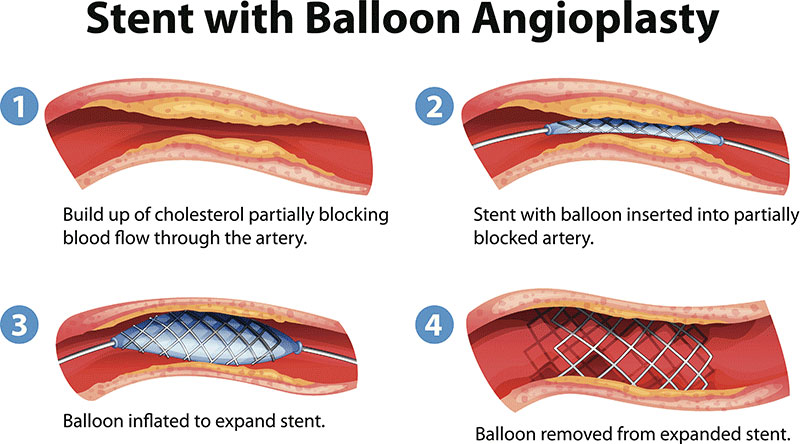
Based on the results of diagnostic testing and a study of your health profile, a vascular specialist will determine whether you are a good candidate for angioplasty.
Other Minimally Invasive Procedures for PAD Treatment
Several PAD treatment options are available, and many of these minimally invasive treatments or procedures are used in conjunction with angioplasty. Your vascular specialist will decide which PAD treatment option will be the most effective and appropriate to manage your artery blockage or narrowing. PAD treatments can reduce symptoms and improve your quality of life, and may also reduce your risk for a heart attack, stroke, or other severe PAD complications.
Minimally invasive PAD treatment options may include:
- Stent placement – used with angioplasty. The same minimally invasive technique is used—a special catheter is inserted into the artery—but the vascular specialist places a wire, mesh tube which remains in place to keep the blocked or narrowed artery open. After proper placement is confirmed, the catheter is removed.
- Atherectomy is a procedure during which a catheter with a small blade at the end is used to remove plaque from inside the blood vessel. This helps to open or widen the artery.
- In thrombolytic therapy, the vascular specialist will inject a clot-dissolving drug into an artery that has been occluded by a blood clot.
Invasive PAD Treatment to Help Open Blocked Leg Arteries
Invasive PAD treatment may include bypass graft surgery. This procedure, which reroutes blood around the blocked artery using a biocompatible, synthetic graft, is more invasive than angioplasty and other PAD treatment options mentioned above.
Lifestyle Recommendations and Medications May Reduce PAD Risk
If a procedure is not needed based on diagnostic tests, lifestyle changes may be recommended or medications can be provided. (ii)
Lifestyle changes recommended to help slow or halt PAD progression include:
- Quitting smoking. Smoking is a significant risk factor for the development or worsening of PAD. Quitting smoking is one of the most important lifestyle changes you can make to help slow PAD progression.
- Exercising. Proper exercise increases blood flow and limb oxygenation. Ask your doctor before starting any exercise program.
- Developing healthy eating habits. A diet low in saturated fat can help control your blood pressure and lower cholesterol, which contribute to narrowing of the arteries.
- Consulting your doctor before taking over-the-counter medications. Some over-the-counter medications contain ingredients that constrict blood vessels, which can increase PAD symptoms.
Medications may be prescribed alone or alongside other therapies to help stop the progression of PAD. These may include medications to:
- Lower cholesterol
- Reduce high blood pressure
- Control insulin
- Prevent blood clots
- Treat symptoms
Recovery and Risks Associated With Minimally Invasive Procedures
Another common question patients have: What is involved in angioplasty recovery or aftercare? Shortly after angioplasty, stent placement, or atherectomy, most patients are able to go home. Prescriptions and aftercare instructions will be left to the discretion of the vascular specialist based on your health profile.
Patients sometimes ask: what are the risks associated with angioplasty? Any medical procedure involves some risks. With angioplasty, these can include:
- Infection
- Formation of new blockages
- Reactions to medications
If you would like more information about angioplasty of the leg or other minimally invasive PAD treatments and procedures,call 844-LEG-DOCS (534-3627) to schedule an appointment.
Sources:
(i) Centers for Disease Control and Prevention. Peripheral artery disease (PAD) fact sheet. Accessed October 22, 2018, from https://www.cdc.gov/heart-disease/about/peripheral-arterial-disease.html.
(ii) Mayo Clinic. Peripheral artery disease (PAD). Accessed October 22, 2018, from https://www.mayoclinic.org/diseases-conditions/peripheral-artery-disease/diagnosis-treatment/drc-20350563.

